Heavy armored cars of the Sd.Kfz family. 231 8-Rad
Thanks to the original approach to creating the undercarriage, the mass production of the new armored car was managed relatively quickly. However, the total number of six-wheeled vehicles was limited to a little more than 120 units. The reason for this was simple: the modified civilian truck chassis could not withstand the heavy weight of the armor and lost acceptable driving characteristics, including throughput. Due to a number of fundamentally inherent flaws in the Sd.Kfz construction. 231 6-Rad in 1934, the Wehrmacht demanded to design a new heavy armored car from scratch, albeit using serial components. The new technical task provided for equipping the armored car with four-wheel drive and an engine, the power of which would be enough to move over rough terrain.
In accordance with the competition task, Bussing-NAG developed a special four-axle chassis with the wheel formula 8х8. The project received the firm designation Schwerer Panzerspähwagen 8-Rad and Army Sd.Kfz. 231 8-Rad. In order to avoid confusion with the previous armored car, which, according to the original plans, should have become a prototype of a new one, we had to add an additional index to the name of both cars with the number of wheels (8-Rad and 6-Rad). The eight-wheeled chassis turned out to be interesting and promising in technical terms, but still quite complex, which further affected the pace of production.
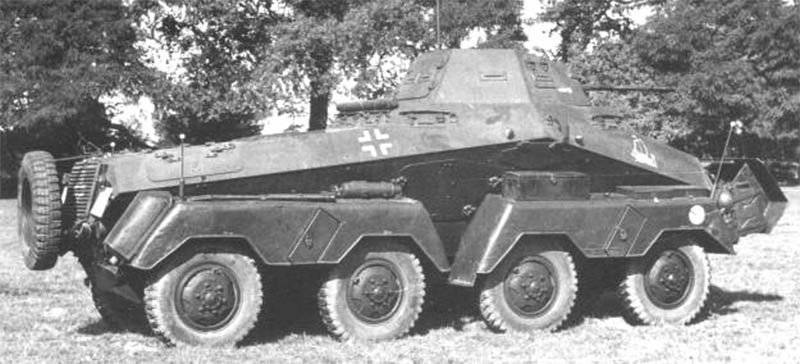
Armored car body Sd.Kfz. 231 8-Rad was based on a T-shaped welded frame. Sheets of armor were attached to it on bolts. The thickness of the body reservation varied from 5 millimeters on the bottom to 15 mm upper front sheet. The design of the tower was similar to the structure of the main body - the frame and the armor plates attached to it. The tower was mounted on the hull using a ball bearing of the appropriate size. In the tower Sd.Kfz. 231 8-Rad was used the original solution, hitherto not used on armored vehicles: under the tower was placed a special design with a polycom fighting compartment. Thanks to this innovation, it was possible to significantly ease the combat work of the crew members who were in the turret, in particular, now they could not change their position during horizontal targeting of weapons.
The internal volume of the housing Sd.Kfz. 231 8-Rad was divided into two parts: combat and engine compartment. The first was located in front of the armored car, it housed the workplaces of four crew members. MTO, in turn, placed in the aft hull. The basis of the power plant was a petrol carburetor engine Bussing-NAG L8V-GS, which developed power to 150 horsepower. The engine torque was transmitted through a dry clutch to a gearbox that had three forward and reverse speeds. Especially for driving over rough terrain transmission Sd.Kfz. 231 8-Rad was equipped with a special gear. In the future, new modifications of the armored car received new engines and an updated transmission. At the same time, the suspension of cars from version to version remained practically unchanged. All eight wheels were suspended with the help of two pendulums for each, between which the semi-axis passed. The problem of depreciation was solved in a rather original way. The upper pendulum wheels of the same axis were connected to each other through a spring. This allowed us to save space and torsion two wheels at once. Actually wheels Sd.Kfz armored car. The 231 8-Rad was molded from steel sheets and fitted with Continental 210x18 low-pressure tires. The surface of the wheel chambers was covered with a rubber sheet, which compensated for punctures and damage. In practice, the wheel could be operated with six holes.
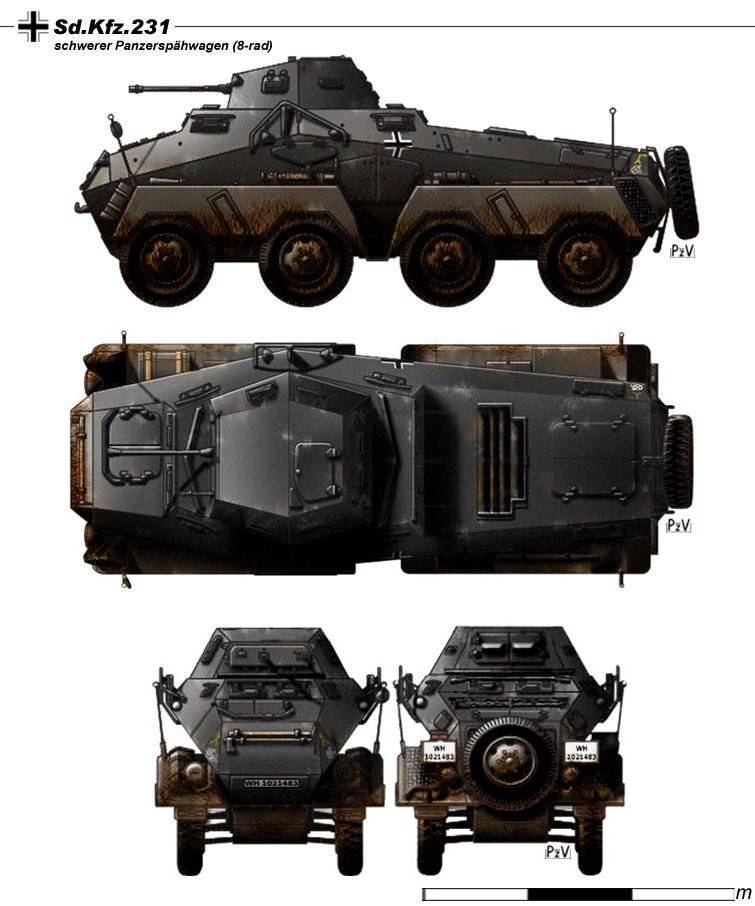
The basis of weapons Sd.Kfz. 231 The 8-Rad was a 20 mm 2 cannon KwK 30 L / 55, or a later KwK 38 L / 55. The automatic rifled gun had ammunition in 200 shells and could fight with lightly armored targets and poorly protected shelters. The 7,92-mm MG34 or MG42 machine gun with an ammunition in 1300 cartridges was paired with a gun. The gun and machine gun could be induced in the range from -10 ° to + 26 ° in the vertical plane and in a circle in the horizontal. Interestingly, if necessary, the crew could fire from a machine gun and with a high elevation. After manipulating the lock of the machine gun, the angle of its vertical guidance increased to + 37 °, but the possibility of simultaneous targeting of paired weapons was lost. Aiming was carried out through an optical device TZF6.
In the original equipment heavy armored car Sd.Kfz. 231 8-Rad had a combat weight of 8300 kg. It was quite a lot for such a technique, but a 150-horsepower engine and a good chassis ensured good driving performance. So, on the highway, the armored car accelerated to 90-100 kilometers per hour and could drive about three hundred kilometers at one gas station. Patency Sd.Kfz. 231 8-Rad was as follows: the machine climbed a slope up to 30 °, overcame half-meter walls, crossed water obstacles up to a meter in depth and crossed through ditches up to 1,2-1,3 meters wide. As noted in the test report of the armored car, its cross was no worse than some tanks that time. Having received a lot of positive reviews, the new armored car in 1937 was adopted. In the shortest possible time, a good Sd.Kfz armored car. 231 8-Rad displaced from the army units of its "ancestor" Sd.Kfz. 231 6-Rad. Three-axle vehicles were gradually decommissioned from the Wehrmacht and handed over to police units, where they served until the resource was depleted.
Already during the first months of operation, the new armored car, nicknamed in the army Achtrad ("Eight-wheeled"), became clear to its good potential not only as an armored car, but also a light wheeled tank. For this reason, over the course of a couple of years, several modifications have been made that differed from the original vehicle in terms of equipment, weapons, etc. The list of versions of the "Eight-wheel" looked as follows:
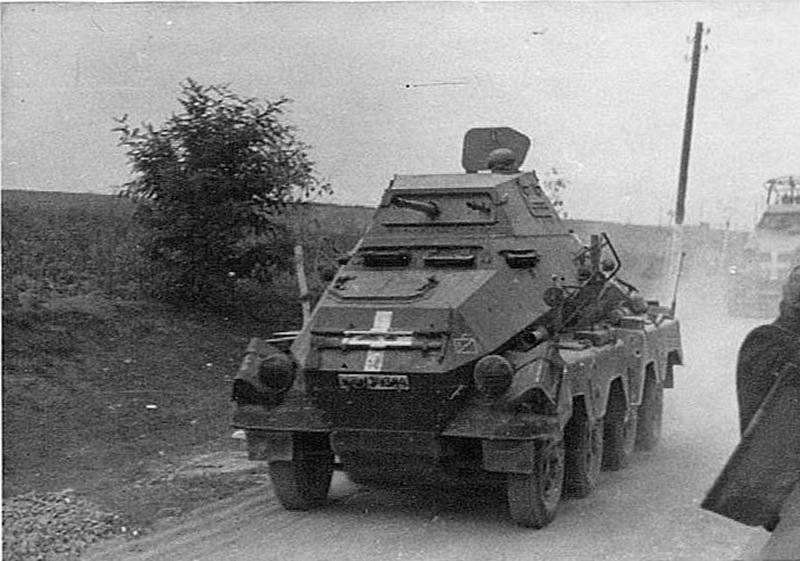
Sd.Kfz. 231 8-Rad. The main modification, on the basis of which all the others were assembled. It was manufactured from 1937 to 42-th year, when it was considered obsolete and discontinued in favor of the new modifications.
Sd.Kfz. Xnumx. It differs from the original armored vehicle by the presence of the FuG11 SE30 radio station and the frame antenna. From 1941, the armored cars of this modification were completed with a FuG12 SE80 radio. The antenna remains the same.
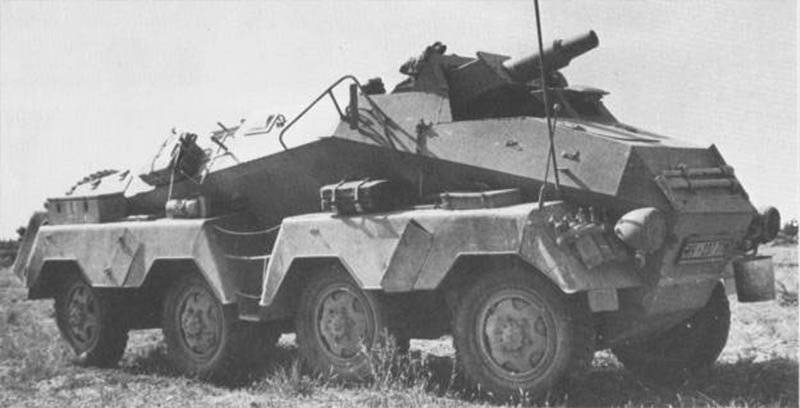
Sd.Kfz. Xnumx. The armored cars of this model went to the troops in the 1942 year. The turret was removed from the base machine, and a short-barreled 7.5 cm Sturmkanone 37 L / 24 gun with small pickup angles was installed on the vacant space. The rest of the weapons and equipment of the armored car did not change significantly.
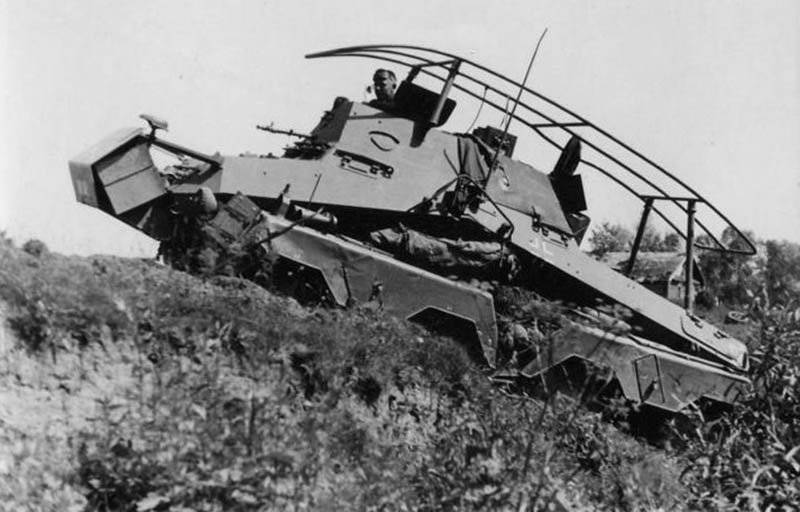
Sd.Kfz. Xnumx. Further development of Sd.Kfz. 231 in the direction of creating a full-fledged communication machine. Instead of a swinging tower, this modification received a stationary armored felling of a relatively large size. On the roof of the case and the cabin there were racks for several antennas connected to radio stations inside the case. Defensive armament consisted of a single machine gun.
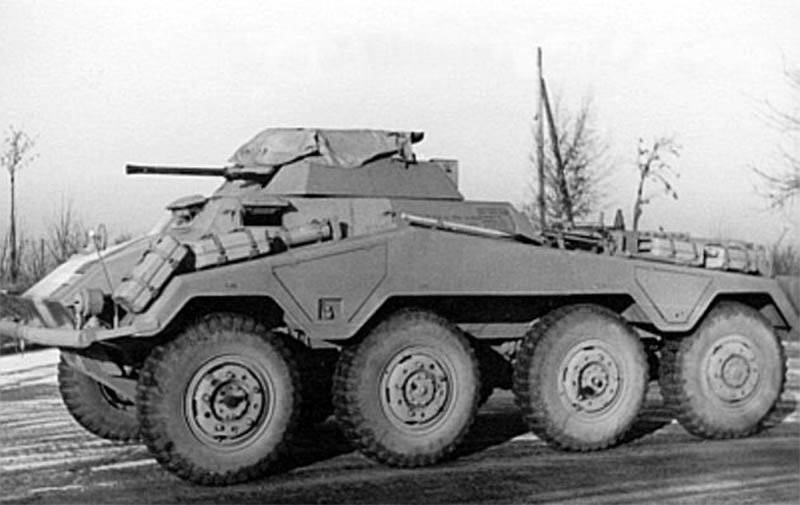
Sd.Kfz. 234 / 1. In 1944, a major modernization of the armored car was carried out with the replacement of the engine, increasing the thickness of the hull plates, etc. So, the front sheet now had a thickness of 30 millimeters. The basis of the power plant was a 12-cylinder Tatra-103 engine with a maximum power 210 hp. In view of the operating experience, the chassis was slightly strengthened and tires replaced. Inheritance from Sd.Kfz. The 231 new armored vehicle received a turret with an 20-mm cannon and a twin machine gun, but with a new armored mask.
Sd.Kfz. 234 / 2 Puma. Thoroughly revised armored vehicle "234 / 1" became the basis for several new armored vehicles for various purposes. His first revision was Sd.Kfz. 234 / 2 Puma. In fact, it was a heavy armored car of the previous model, but with a new turret and weaponry. The Puma Tower was larger and was armed with an 50-mm 5 cm KwK 39 L / 60 cannon. It was paired MG42 machine gun with multiple tapes for 1050 ammunition. Vertical guidance weapons could be carried out between -10 ° and + 20 °. On the tower Puma installed two triple-barreled smoke grenade caliber 90 mm.
Sd.Kfz. 234 / 3. Further development at the same time Sd.Kfz. 233 and Sd.Kfz. 234 / 1. Instead of a tower on the hull of the latter, relatively low sheets of armor were mounted that formed the wheelhouse. An 75-mm 7.5 cm KwK K51 cannon was mounted on the front logs, and its ammunition was 50 shells. The fastening system made it possible to point the weapon within 12 ° to the sides in the horizontal plane and in the range from -10 ° to + 12 ° vertically. The relatively large volume of the combat compartment of the self-propelled armored vehicle allowed us to simultaneously carry up to 1950 ammunition for the MG42 machine gun. Instead of smoke grenade launchers, smoke bombs with a remote igniter were placed on the body.
Sd.Kfz. 234 / 4. Anti-tank armored car. Based on the tower of previous armored cars, a new fixed wheelhouse was designed. It put the 75-mm anti-tank gun PaK 40 L / 46. The firing sector in the horizontal plane was similar to the same parameter in Sd.Kfz. 234 / 3, and vertical guidance was conducted in the sector 3-22 degrees from the horizontal. Equipment, additional weapons, etc. remained the same.
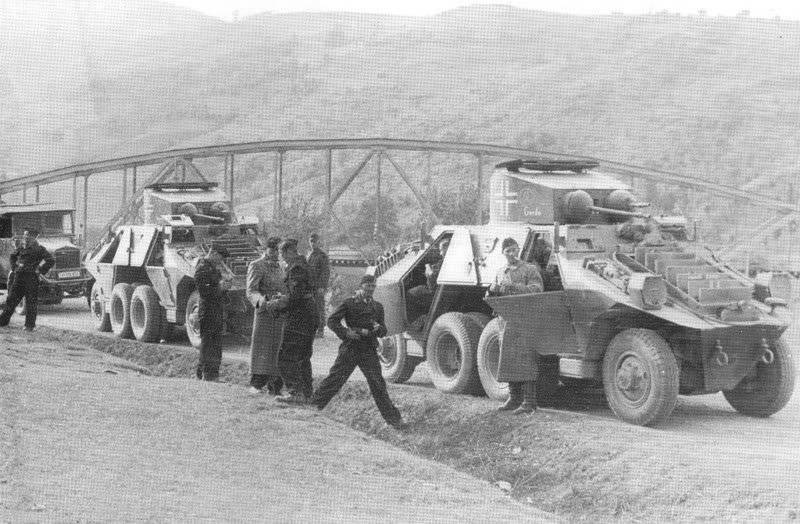
ADGZ. The last representative of the family of armored cars based on Sd.Kfz. 231 8-Rad has become the machine ADGZ. It was quite different from other armored vehicles and, therefore, despite its direct origin from Sd.Kfz. 231 is often considered an independent development. In the engine room ADZG installed Austro Daimler M612 engine with horsepower 150. For some reason, only four wheels from the second and third pair were leading on this modification. At the same time to ensure proper adhesion to the surface on the second and third axles was installed on two wheels instead of one. The main armament of the ADGZ was the 20-mm automatic gun 2 cm KwK35 L / 45 in a rotating turret. It is worth noting that the gun was mounted in a rotating installation, which was not typical for such weapons. The gun was installed in the right half of the tower. The left was given to the MG34 machine gun in a similar ball installation. In addition to turning the turret, ball mounts provided additional guidance within a sector of width 20 ° in the horizontal plane. Vertical guidance angles range from -12 ° to + 18 °. Unlike all previous armored vehicles of the family, the ADGZ could fire two targets simultaneously.
All armored cars of the Sd.Kfz family. 231 8-Rad had a chassis of a similar design, because of what they had equally good throughput, which almost did not deteriorate with an increase in combat mass. At the same time, the suspension was quite difficult to manufacture. As a result, no more than two thousand armored cars of all models were assembled. The most successful in quantitative terms turned out to be the original Achtrad, which was released in "circulation" in 1200 with more than one unit. Other machines in various proportions divided the remaining production volumes. One of the main reasons for this was the very complexity of the suspension: in peacetime, the production of Sd.Kfz was established. 231 8-Rad, but the war could not deploy a massive assembly of new models.
Combat use of all armored vehicles was reduced to the support of infantry in the offensive and cover it with their fire. Modifications armed with 75-mm guns were repeatedly used in the fight against tanks, but due to the relatively weak booking, attempts to use armored cars as tank destroyers quickly ceased. The greatest success Sd.Kfz. 231 8-Rad and its "followers" reached in North Africa, where the permeability of the eight-wheeled chassis made it possible to effectively conduct combat operations with tracked armored vehicles. Despite all the successes and the totality of combat characteristics, by the middle of World War II Achtrad armored cars became an insufficient means of combat. Because of this, their use was gradually reduced and their main task was to escort convoys, escort troops on the march and other actions not related to a direct clash with the enemy. Several copies of German heavy armored vehicles survived to our time, most of them belong to the Sd.Kfz family. 234.
Throughout the Second World War Sd.Kfz armored cars. 231 8-Rad fell into the hands of the Allies. Some of these trophies were in fairly good condition and used for testing. Testers of the Soviet Union, Great Britain and the United States recognized the positive aspects of the original chassis design. However, the views of the military of that time were directed towards tanks and self-propelled artillery installations. Armored cars, including heavy ones, began to be considered a kind of anachronism. For this reason, the following armored wheeled vehicles were representatives of the class "armored personnel carrier". Nevertheless, an interesting layout of the chassis with two levers interested designers of the anti-Hitler coalition. It is noteworthy that such ideas, for example, existed in our country before, but simply did not find mass application. German experience has shown that the two levers and the half shaft between them is a promising and interesting system. Perhaps it was thanks to the trophies that the Soviet armored personnel carrier BTR-60 received a similar suspension. At the same time, it only looks like a Sd.Kfz undercarriage. 231 8-Rad. The fact is that these armored vehicles have a different suspension system. The German armored car used leaf springs, one per axle, and the Soviet armored personnel carrier was equipped with an interesting system of torsions and hydraulic shock absorbers.
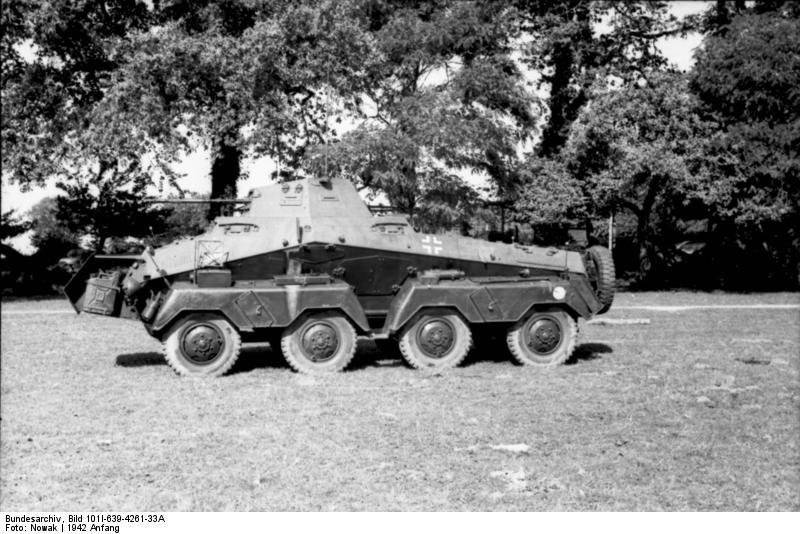
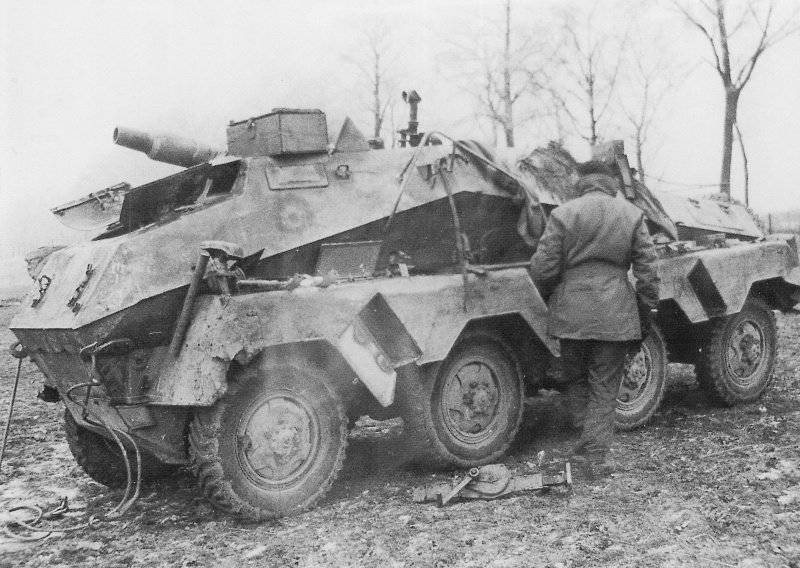
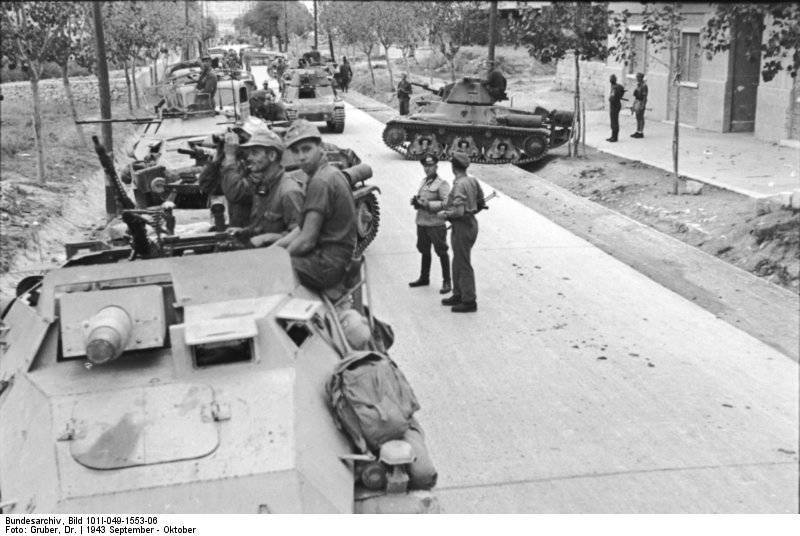
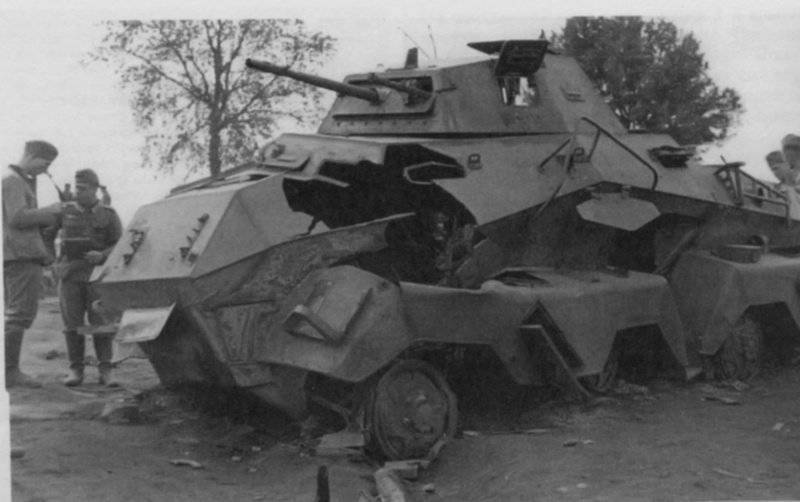
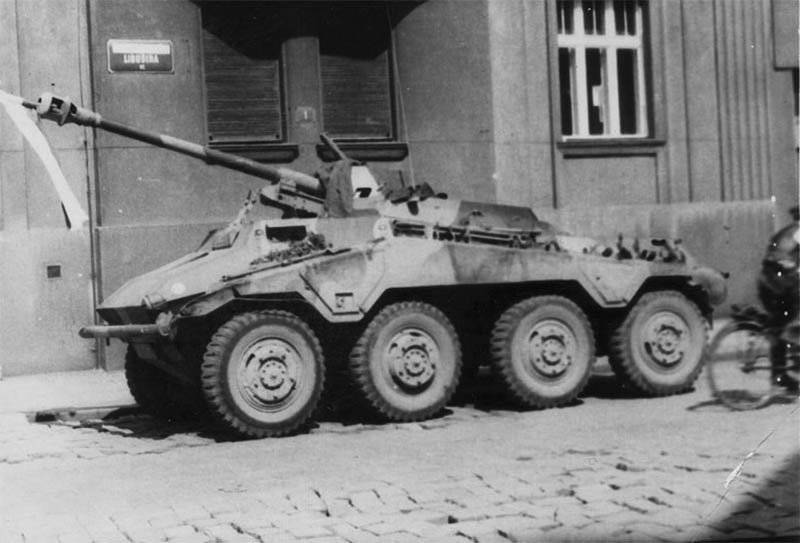
On the materials of the sites:
http://pro-tank.ru/
http://armor.kiev.ua/
http://apeiron-games.ru/
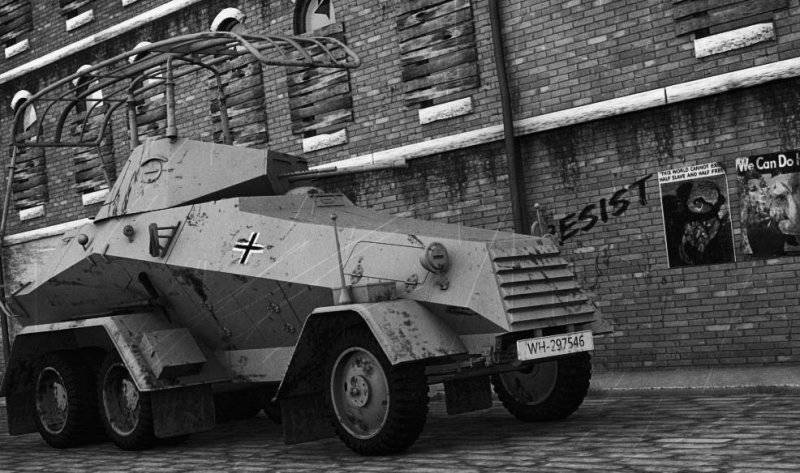
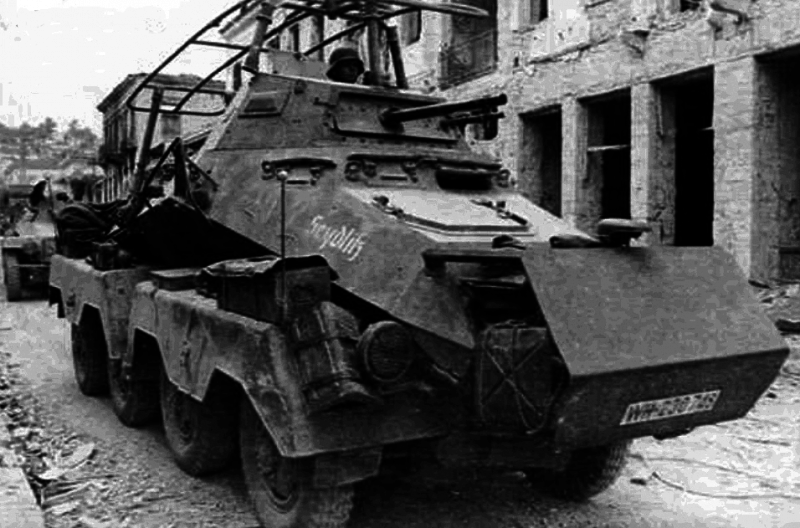
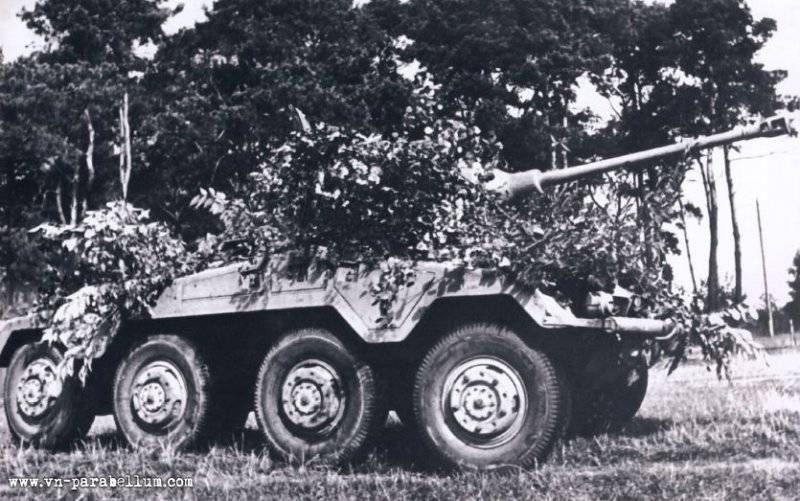
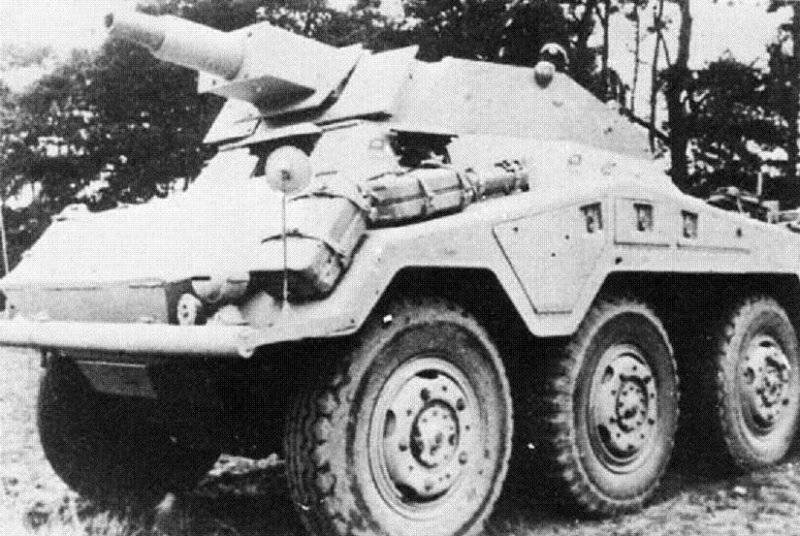
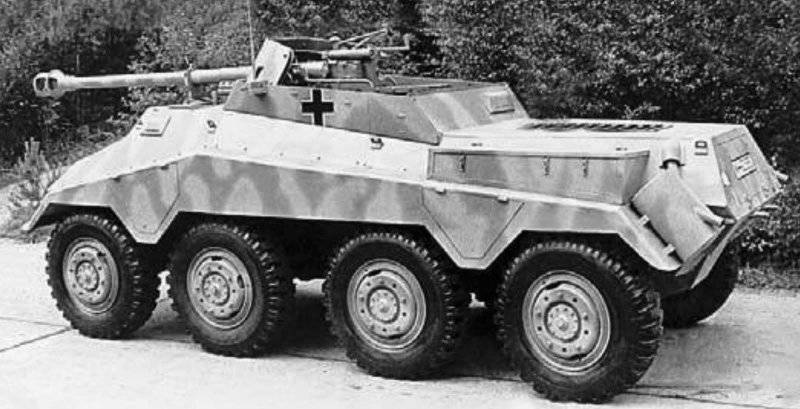
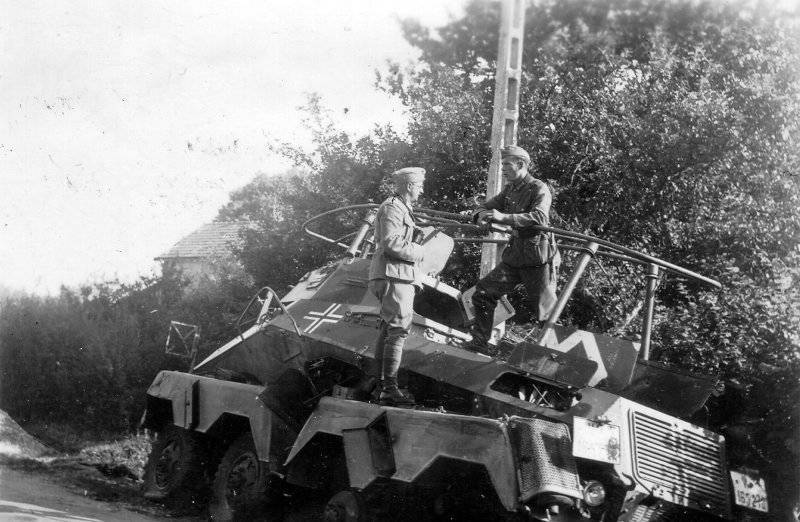
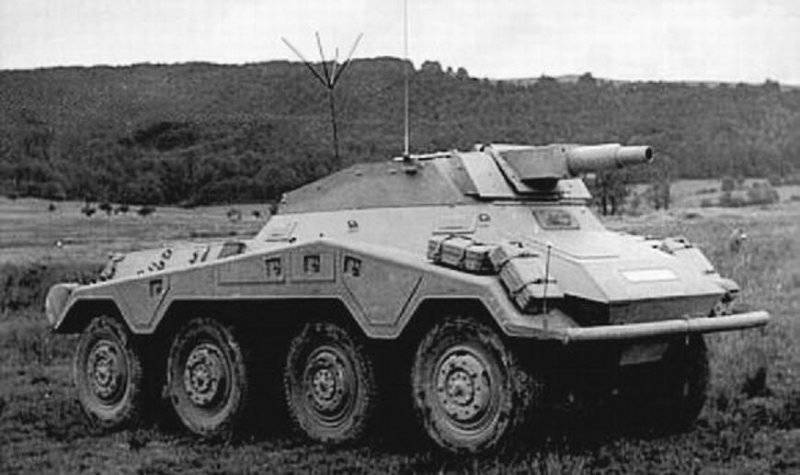
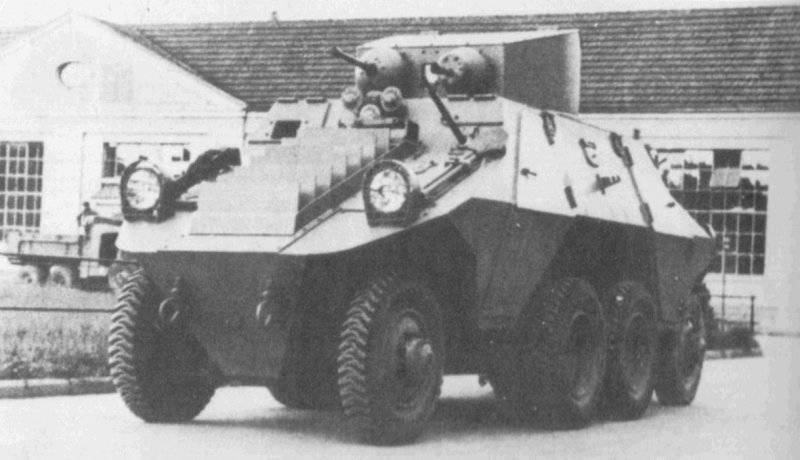
Information